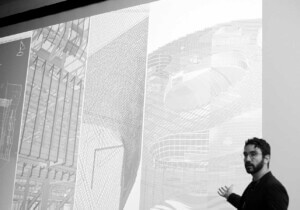Sidewalk Labs, the urban innovation arm of Google parent company Alphabet Inc., has launched Delve, a new generative design software tool that aims to guide developers, architects, and planners in the creation of healthy, sustainable, and equitable urban neighborhoods by presenting teams with a wide plethora of design possibilities, generated via machine learning, that respond to the unique criteria presented by individual projects. This criterion is set around core components found in most urban development projects: buildings, open spaces, amenities, streets, and energy infrastructure.
Delve is intended to dramatically speed up and optimizes the planning process while meeting the various inputs, constraints, and priorities presented by development projects. In theory, teams are liberated from the burdensome time and cost limitations that often dictate this process and freed up to experiment, adjust, and improve while also responding to the unique needs and wants of community members based on feedback.
As Okalo Ikhena, director of Product Management at Sidewalk Labs, elaborated in a statement introducing the new tool:
“Over the life of any development project, teams invest countless hours in getting the little things right. Yet the traditional urban development process struggles to design for a complex and competing set of priorities and constraints. The decisions made early in the process, especially in the master-planning stage, can have unforeseen impacts later on — and can make or break a project’s viability.
Delve uses machine learning to help development teams discover the best neighborhood design for their project, based on the priority outcomes that matter most. By revealing the optimal design option, Delve helps development teams exceed their project economic goals while improving quality-of-life outcomes for residents and businesses.”
As Ikhena detailed, Delve, which was first introduced as a prototype tool late last year, includes a slew of core features including:
- Ranked options: An easier way to “identify the highest-performing design options by ranking them according to how well they perform on the priority metrics defined by the development team, and showing these scores in a clear report.”
- High-fidelity design: Delve “allocates individual housing units across a project site to help find more residential density. It also evaluates daylight access for each unit — not just whole buildings — to help inform facade treatments and energy load. Other design elements include open space access, walkability, views, and more.”
- Integrated financial models: “Delve runs an intricate financial model for individual segments of every design option it generates — modeling cost per building, street section, open space, and more. These cost models also integrate with a customer’s own financial spreadsheets to create a seamless experience.”
- And built-in utility models: “Delve features a built-in utility demand tool — designed alongside experts from Sidewalk’s sustainability team — to provide an ongoing estimate of key energy infrastructure measures, such as electricity use, waste and water, and rooftop solar intake. That way, as a project evolves, developers always know whether they’re meeting their own sustainability goals as well as local standards.”
Delve has already been employed in its pre-launch form as part of a case study spearheaded by U.K.- and Ireland-based developer Quintain in its planning of the 12-acre mixed-use development at the North East Lands site at Wembley Park, an 85-acre redevelopment project around the district’s fabled namesake stadium that’s bringing over 8,000 new homes to Brent, a borough of North West London. The North East Lands site is the last parcel developed as part of the massive Wembley Park scheme.
“Quintain had ambitious goals for the parcel and needed a design that could satisfy multiple spatial and performance requirements. Previous designs from 2016 and 2019 either did not provide sufficient unit yield to achieve the project’s financial objectives or reduced daylight access,” the case study explained. “While taller buildings would add more units, they led to overshadowing and increased costs for higher floors. Facing a complex problem space, Quintain turned to Sidewalk Labs’ Delve software to augment their decision-making process.“
By identifying 24 high-performing design possibilities over an eight-week engagement period, the tool, which produced a total of roughly 40,000 variants, enabled Quintain to more effortless balance required housing density and cost impacts with the preservation of open space and daylighting requirements. Increased baseline goals included the total number of housing units (2,417 to 2,612), the average size of each unit (789 square feet to 802 square feet), and the amount of open space (7.26 acres to 8.07 acres) along with greater sun hours, daylight access, and total leasable space.
Learn more at the Delve website and Ikhena’s announcement on Medium.











